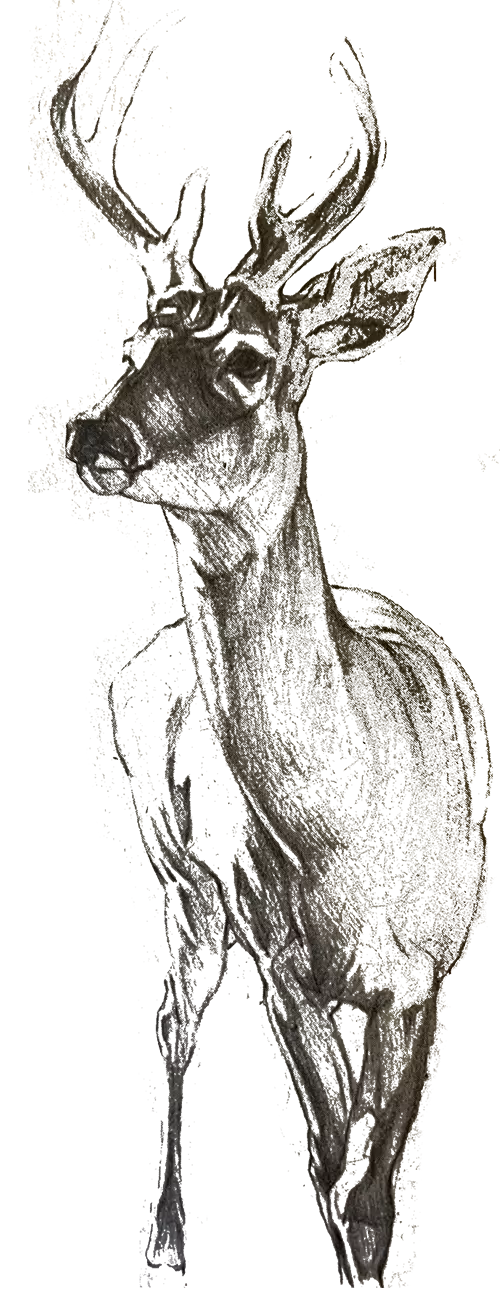Fossil Rim has been open to the public for more than 30 years, but we go back farther than that. Learn about Fossil Rim’s history and the people who made it possible.
Chapter 1
In the early 1970s, Fort Worth businessman Tom Mantzel had a penchant for making money in the oil industry and a passion for exotic animals. In 1973, he purchased an exotic game ranch called “Waterfall Ranch.” He renamed the place “Fossil Rim Wildlife Ranch,” and enthusiastically set about adding to its exotic hoofstock herds. What began as a weekend retreat for Tom soon became a full-time obsession. Growing concern over the loss of wild habitat and species extinction compelled Tom to experiment with captive breeding at Fossil Rim. In 1982, he brought Grevy’s zebras to the ranch in his first effort to propagate an endangered species. Fossil Rim became the first ever ranch to participate in a Species Survival Plan (SSP) with the American Zoo and Aquarium Association (AZA). Success with the Grevy’s SSP spurred work with other endangered animals, like the African addax.
By 1984, the near collapse of the petroleum industry was in full swing and hurting the Texas economy. To continue financing his species propagation programs, Tom decided to open the ranch to the public. With his small staff, he built a nine-mile road through 1,400 acres of hills, pastures and forests. Fossil Rim eventually opened a snack bar, a souvenir stand and introduced three new species – the Grant’s zebra, ostrich and reticulated giraffe.
Before long, Tom developed a volunteer program to help with the many school groups, scouts, organizations and individuals who wanted to see the unusual ranch with the extraordinary animals. While having fun and seeing new wildlife, people also were learning about the various animals, their habitats and the need to save endangered species.
Fossil Rim had developed a personality – a life of its own – as people were becoming aware of the facility and its mission. And though initially Tom hadn’t planned for his ranch to become a public attraction, he liked the interaction he saw between visitors and the animals.
Fossil Rim experienced great success with its early propagation programs. In 1985, the ranch acquired additional endangered species, including the African scimitar-horned oryx.
When one tugs at a single thing in nature, he finds it attached to the rest of the world.
John Muir
After lengthy communications with permitting offices, Tom also persuaded the U.S. government to allow him to import six cheetahs from South Africa. The cheetah program has grown into Fossil Rim’s greatest propagation success story with more than 200 cheetahs being born at Fossil Rim.
By 1987, Tom’s losses in the oil industry caused him to take a hard look at Fossil Rim. He realized the high maintenance costs of the ranch were draining him financially, but he refused to turn his back on the animals he loved. When he could no longer bear the costs of the ranch, Tom began a search for a partner.
Chapter 2
Jim Jackson and Krystyna Jurzykowski were about to set sail on their own voyage of discovery. Both had worked hard to build successful, independent careers, and now they were ready for more.
While building their sailboat in Denmark, Jim and Krystyna happened to see a television program on the wildlife propagation efforts of John Aspinall, an English businessman turned conservationist. The story struck a chord in both Jim and Krystyna, who already were committed to conservation, but were looking for a hands-on way to take action.
The images of one man’s work to save endangered species were powerful and provocative. The fact that he was successfully breeding wild animals that might otherwise disappear forever drove home a crucial point – one person really can make a difference. Although Jim and Krystyna had long supported conservation efforts philosophically and financially, they had no actual experience with wildlife.
The idea that they could develop a wildlife preserve, much as Aspinall had done, and make a substantial contribution to conservation had enormous impact upon their lives. Without any background in wildlife science, other than personal interest, Jim and Krystyna had a lot to learn.
They researched the subject voraciously, planning to buy land on the Caribbean island of Martinique to develop as a wildlife preserve for land and marine animals. It was while seeking advice from animal propagation experts that they first learned of Fossil Rim.
Those that contemplate the beauty of the earth find reserves of strength that will Indore as long as life lasts.
Rachel Carson
When Tom Mantzel heard about their inquiries, he approached Jim and Krystyna about participating in Fossil Rim’s efforts. After discussing Tom’s goals for the ranch and his financial difficulties, they decided to help.
Initially, Jim and Krystyna advanced Tom operational funds for the ranch. Shortly thereafter, they learned that foreclosure was imminent. Realizing they had to make the ultimate commitment or witness the loss of Fossil Rim and its wildlife, Jim and Krystyna negotiated to buy the ranch. After a difficult transition that took them from partnership to outright ownership, the ranch became Fossil Rim Wildlife Center on May 7, 1987.


